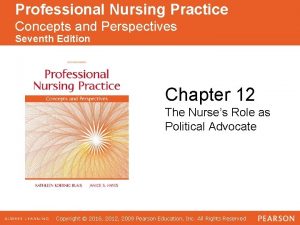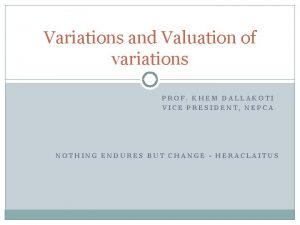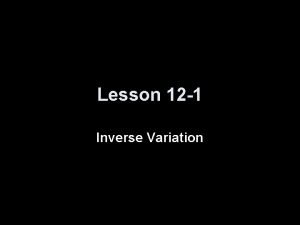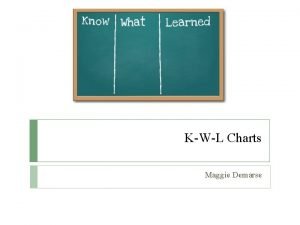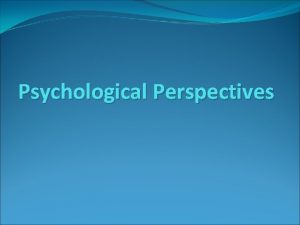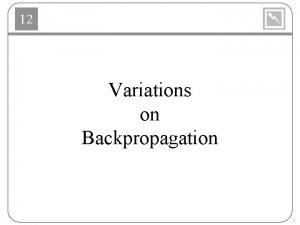Chapter 10 International Perspectives International variations in practice






- Slides: 6

Chapter 10 International Perspectives

International variations in practice A little over a decade ago, Hicks (2004, p 19) commented on how: We can only understand life today in our own communities if it is set in the wider global context. What happens elsewhere in the world constantly impacts on our daily lives even if we may not have been aware of it … climate change, energy use, economic growth, wealth and poverty, and violent conflict affect our local communities and dayto-day living … the forces of globalization, engineered by the rich world, are binding the world more closely together, but are also being more fiercely resisted than ever before …

International variations in practice Wood (2004) has drawn attention to how debates surrounding education and its link to economic factors have been successively heightened through comparisons being drawn by governments with other countries. She drew particular attention, for example, to how publications in the UK during the 1990 s such as those by Ofsted (1996) had suggested how children were achieving less than their peers in the Pacific Rim countries, especially China, Japan and South Korea. Wood emphasised how the debates had intensified when Asian tiger economies appeared to be thriving, leading to a ‘flurry of reports’ from her Majesty’s Inspectorate (HMI) calling on the UK government to learn how schools were organised and how children were being taught in these other countries.

Inclusion across the globe Coulby (2004) has drawn particular attention to the whole issue of inclusion and how this differs across European countries as follows: The whole industry of detailed categorization (labelling) and separate, special provision (segregation) is absent in countries such as Italy and Norway. All children are restrictive least environment maximum educated the of together with in The and integration. curricular social reflects a society which too readily rejects and segregates children on the basis of perceived difference. (p 54) It is important to acknowledge that the whole issue of ‘inclusion’ continues to exercise thinking across the globe and is affected by a multitude of factors: political, economic, social, historical and cultural. Much debate continues, for example, around the extent to which children with complex special educational needs and/or disabilities should be educated within mainstream educational settings.

Children and conflict Conflict is evident across the world with many thousands of children having their lives and their education affected in ways that impact significantly upon their future. UNICEF recently reported how, in 2015, over 16 million children were born into conflict, i. e. one in every eight births. In 2016 UNICEF posted an appeal on their website in which they hoped to raise £ 806 million for the crisis in Syria. They reported that over six million children who had remained inside Syria were in urgent need of humanitarian assistance, with two million children living in hard-to-reach and besieged areas. Millions of children in Syria, as well as those who have left, have lost their families and loved ones as well as their homes. Children have been facing unimaginable violence, they have little if any food and clean water, and are increasingly facing disease and malnutrition as well as exploitation by adults. UNICEF have stressed how conflict and extreme weather are driving large numbers of children from their homes and rendering millions more to serious shortages of food and starvation, violence, abuse and disease; all of these, in addition to significant risks to their education. UNICEF have also reported that some 246 million children, i. e. one in every nine of the world’s children, now live in conflict zones. In 2015, children living in those countries and areas touched by conflict were ‘twice as likely to die of mostly preventable causes’ prior to reaching 5 years of age, than children living in other countries.

References Coulby, D. (2004) ‘Education in Europe’, in S. Ward (ed. ) (2004) Education Studies: A Student’s Guide. London: Routledge Falmer. Hicks, D. (2004) ‘The global dimension in the curriculum’, in S. Ward (ed. ) (2004) Education Studies: a Student’s Guide. London: Routledge Falmer. Ofsted (1996) ‘Worlds Apart: A Review of International Surveys of Educational Achievement Involving England’. London: The Stationery Office. Wood, K. (2004) ‘International perspectives: the USA and the Pacific Rim’, in S. Ward (ed) (2004) Education Studies: a Student’s Guide. London: Routledge Falmer

